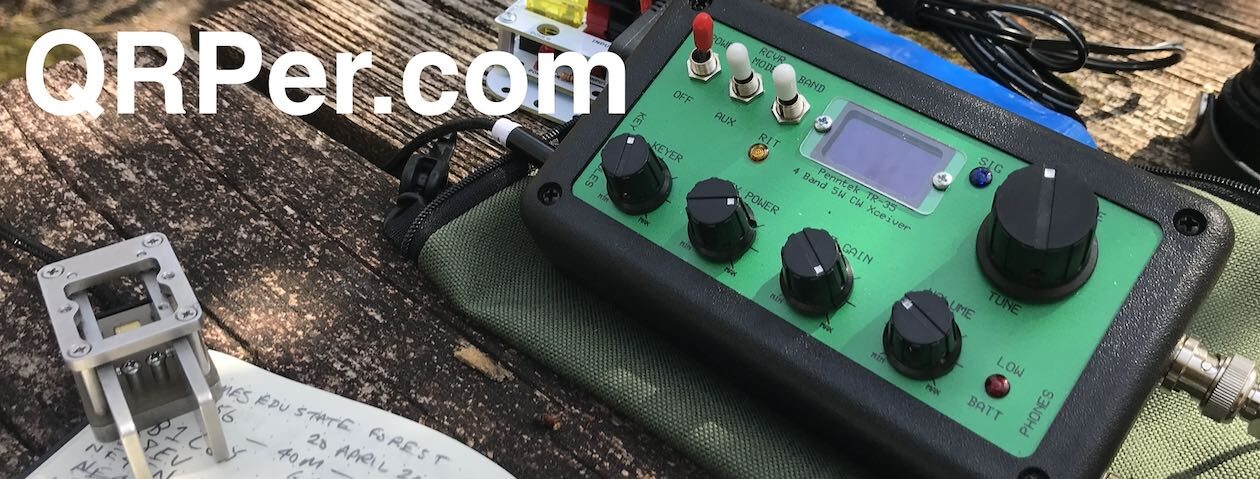Wednesday, January 29, 2025, was a busy day, but that morning, I was yearning for a little POTA time. I carved out an hour in the late afternoon to play radio—just enough time for a quick activation on the Blue Ridge Parkway (US-3378).
 I had two new pieces of gear I was eager to test:
I had two new pieces of gear I was eager to test:
- A BNC mini antenna clamp mount, designed by my good friend Mike (KE8PTX), for use with Elecraft AX-series antennas and other mini verticals.
- A vintage Swiss Army rucksack, a Christmas gift from a dear friend, beautifully restored by Jack Carter.
BNC Mini Antenna Clamp Mount
 Mike designed this clamp to be lightweight, durable, and versatile—it can attach to more than just a tabletop. He’s even clamped his AX1 to tree branches! As with all of Mike’s creations, it’s purpose-built for field operators like himself.
Mike designed this clamp to be lightweight, durable, and versatile—it can attach to more than just a tabletop. He’s even clamped his AX1 to tree branches! As with all of Mike’s creations, it’s purpose-built for field operators like himself.
If you have a 3D printer, you can print your own, or you can buy a professionally printed version from Joshua (N5FY) at Tufteln (links below).
A New Vintage Backpack!
 This Christmas, I received a surprise parcel. When I opened it, I couldn’t believe my eyes—a vintage Swiss Army rucksack in pristine condition!
This Christmas, I received a surprise parcel. When I opened it, I couldn’t believe my eyes—a vintage Swiss Army rucksack in pristine condition!
Many of you know I have a soft spot for vintage military packs, and this one is truly special. Jack Carter, who restores these packs, wasn’t sure of its exact age but estimated it to be from the late 1950s or early 60s.
Specs:
- Internal aluminum frame
- Water-resistant salt-and-pepper nettle canvas with leather straps and bottom
- External flapped pocket (9 x 11 x 2 inches)
- Adjustable leather shoulder straps
- Main compartment (20 x 16 x 8 inches)
- Weight: ~6 lbs
Jack meticulously documented the restoration process, including deep cleaning, six rounds of leather cleaning, twelve coats of leather conditioner, and two cans of Filson Oil Wax applied with a heat gun to protect the canvas.
The result? A cavernous, beautifully restored rucksack that will accompany me on many POTA and SOTA excursions. At six pounds, it’s a bit heavy for longer hikes, but for moderate treks, it’s perfect.
I chose the TR-45L for its first POTA activation because I’ve always felt the TR-45L has a nice vintage/nostalgic look to it. It and the pack pair nicely!
Setup
 Setting up the BNC clamp mount was a breeze. Mike designed it with a dedicated attachment point for the Elecraft AX2’s 13’ counterpoise.
Setting up the BNC clamp mount was a breeze. Mike designed it with a dedicated attachment point for the Elecraft AX2’s 13’ counterpoise.
After securing the antenna, I used the TR-45L’s built-in Z-Match ATU to achieve a near-perfect SWR.
Note: Unlike the AX1, the AX2 is a monoband antenna. Mine is set up for 20 meters, though the coil can be modified for other bands above 20 meters.
With everything in place, it was time to hit the air!
Gear:
 Note: All Amazon, CW Morse, ABR, Chelegance, eBay, and Radioddity links are affiliate links that support QRPer.com at no cost to you.
Note: All Amazon, CW Morse, ABR, Chelegance, eBay, and Radioddity links are affiliate links that support QRPer.com at no cost to you.
Radio
- Penntek TR-45L with optional Z-Match tuner and internal battery (note: this item has been discontinued)
Antenna System
- Elecraft AX2 with 13′ counterpoise
- AX1/AX2 KE8PTX Clamp Mount (print your own or buy at Tufteln)
- Tufteln BNC to BNC RG-316 Cable Assembly
Key and Cable
- CW Morse Outdoor Double Paddle With Steel Base
- Cable Matters 2-Pack Gold-Plated Retractable Aux Cable – 2.5 Feet
Logging
Pack and case
- Vintage Swiss Army Rucksack
- FoxPro padded case for the TR-45L (discontinued)
Camera Gear
- DJI OSMO 4 action camera with Joby Telepod Sport Tripod
- DJI Wireless Microphones
On The Air
 To make the activation more fun, I lowered the output power to two watts. Earlier in the day, 20 meters had seemed lifeless, so I expected a casual activation with space between contacts.
To make the activation more fun, I lowered the output power to two watts. Earlier in the day, 20 meters had seemed lifeless, so I expected a casual activation with space between contacts.
 I was wrong. Continue reading Pure POTA Fun: A Quick Two-Watt Activation with New Gear and a Vintage Pack
I was wrong. Continue reading Pure POTA Fun: A Quick Two-Watt Activation with New Gear and a Vintage Pack






















